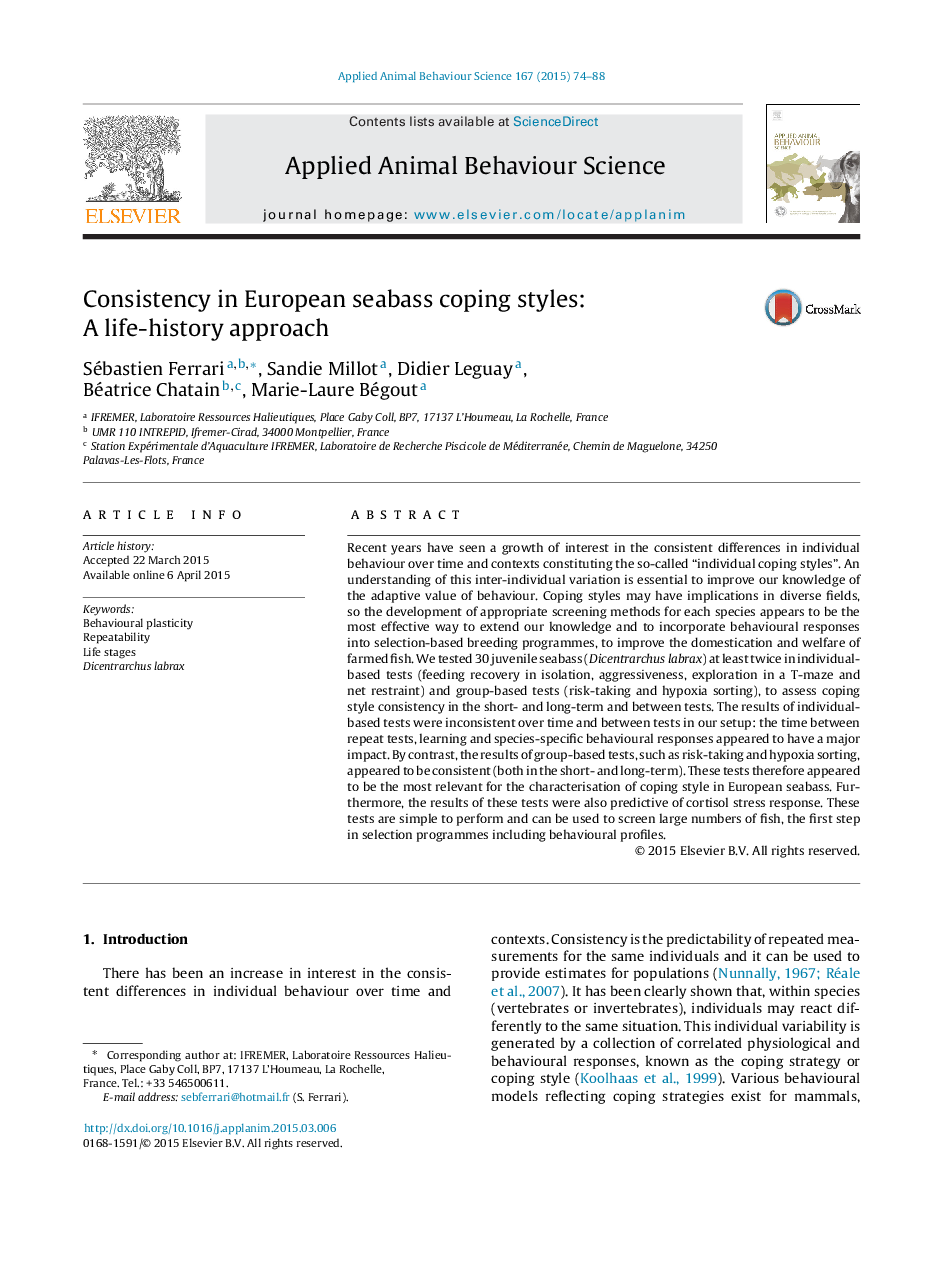| کد مقاله | کد نشریه | سال انتشار | مقاله انگلیسی | نسخه تمام متن |
|---|---|---|---|---|
| 4522485 | 1625339 | 2015 | 15 صفحه PDF | دانلود رایگان |
• We characterised coping styles in European seabass.
• We showed evidence for behavioural consistency in group-based tests.
• Results may also be accounted for by species specificity in behavioural responses.
Recent years have seen a growth of interest in the consistent differences in individual behaviour over time and contexts constituting the so-called “individual coping styles”. An understanding of this inter-individual variation is essential to improve our knowledge of the adaptive value of behaviour. Coping styles may have implications in diverse fields, so the development of appropriate screening methods for each species appears to be the most effective way to extend our knowledge and to incorporate behavioural responses into selection-based breeding programmes, to improve the domestication and welfare of farmed fish. We tested 30 juvenile seabass (Dicentrarchus labrax) at least twice in individual-based tests (feeding recovery in isolation, aggressiveness, exploration in a T-maze and net restraint) and group-based tests (risk-taking and hypoxia sorting), to assess coping style consistency in the short- and long-term and between tests. The results of individual-based tests were inconsistent over time and between tests in our setup: the time between repeat tests, learning and species-specific behavioural responses appeared to have a major impact. By contrast, the results of group-based tests, such as risk-taking and hypoxia sorting, appeared to be consistent (both in the short- and long-term). These tests therefore appeared to be the most relevant for the characterisation of coping style in European seabass. Furthermore, the results of these tests were also predictive of cortisol stress response. These tests are simple to perform and can be used to screen large numbers of fish, the first step in selection programmes including behavioural profiles.
Journal: Applied Animal Behaviour Science - Volume 167, June 2015, Pages 74–88
